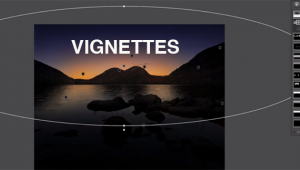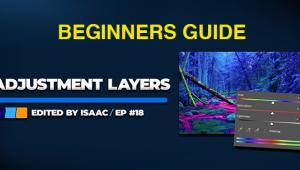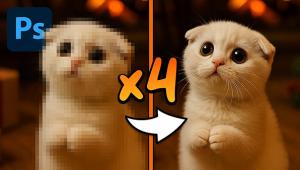THE INNOCENT MONKEY WRENCH
A small sample of suggested diagnosis indicated the problem does come from a display that is too bright. Another small group suggested the too dark print is caused by selecting the wrong profile for printing. Of those who identified an LCD display being too bright, a few suggested calibrating and profiling the display while many more suggested just reducing the adjustment of the brightness control. To the average digital photo enthusiast this diversity of the way the problem of prints too dark is experienced and described, as well as the assortment and sometimes weirdly fanciful fixes offered, surely does not indicate a clear and simple understanding of why prints are too dark or what to do about it.
There is a reason for this, and that is the most likely cause may not have any apparent association in time or action with the experience of the problem of dark prints, and there may be other problems involved beyond the primary cause, obscuring and complicating the problem; in other words a user is getting prints too dark and is having another issue with printing that is concurrent in time but functionally not connected to why the prints are dark. The other confusing aspect of this is that the cause of too dark prints in most cases only shows up when prints are made from particular image file sources and using particular printing options - sometimes.
Instead of making this “prints too dark” issue even more mysterious and perplexing let me explain. The primary cause of dark prints is usually a bright LCD display, not directly but indirectly and not printing all kinds of image files, just some and the only when certain methods or workflow options are chosen. In other words LCD displays are too bright, from a little brighter than a CRT monitor to a lot brighter. This fact does not directly cause prints to be output too dark as there is no direct link, or causal path between the display and printer. But LCD brightness does affect on-screen perception of images, and if a photo image for instance is opened in an image editing application and then adjusted for brightness and the file saved, the midpoint setting that results from that brightness adjustment is related to the scale of brightness values of the display. The range of values of an LCD display is greater than the range of corresponding density values in a print so the midpoint setting of the file adjusted for LCD screen brightness is “misplaced” to print a correct or equivalent print density. Think of it this way: take two straws, one longer than the other, then put a pen mark at the midpoint of each straw, equal distance from each end. Then put the straws on end, with one end on a table-top, and the straws side by side. You will see the midpoint marks on each straw will be at different heights from the table top - it is a mismatch of midpoints, as it is a mismatch of midpoints between an LCD display on-screen brightness adjustment of an image and what the midpoint needs to be to obtain a correct, perceptually equivalent, lightness adjustment of print output.
This mismatch of density midpoints never occurred with CRT monitors because the white point luminance was only around 90.0 CD/m2 so the range of brightness values of CRT on-screen images was about the same as the range of density values that can be reproduced by a photo printer. An ideally calibrated and profiled LCD display will have a white point luminance of 120.0 CD/2, which is 25% greater than the range of densities than can be reproduced by a print. While at default manufacturer settings LCD displays can produce white point luminance readings of as much as 300.0 CD/m2 and greater.
Some may say, I have an LCD display and my prints aren’t too dark. That may because they are printing digital camera JPEG files directly without any image editing, or it may be they are printing from files made using a CRT for color correction and editing stored on a CD, or files off the internet, even screen capture prints will reproduce with densities closely matched to what you see on-screen. But then if someone says they do color correct and edit their images on-screen, save the files and then print them and they are not too dark. Well, again they would not be too dark if printed using the “printer driver manages color” setting. Most photo capable printers if the easy, automatic print workflow is chosen, actually color correct, adjust and optimize the file information received automatically as part of the print processing; and if the midpoint is misplaced by using an LCD display for editing, the printer driver corrects for it. But that easy automatic “printer manages color” setting may not be ideal, especially if you want matched color with what is on screen or if the subject of the image is unusual, like a winter, snow covered scene. It is usually only when a photographer is using an application like Photoshop, LightRoom or Aperture that is color managed and selects to print with the application managing color, and printing to a specific printer output profile, that too dark prints result.
LCD displays have many advantages over the old CRT’s they replaced, but their brightness threw an innocent monkey wrench into the works of a color managed print workflow, and maybe a few other unlucky users making prints as well.

































